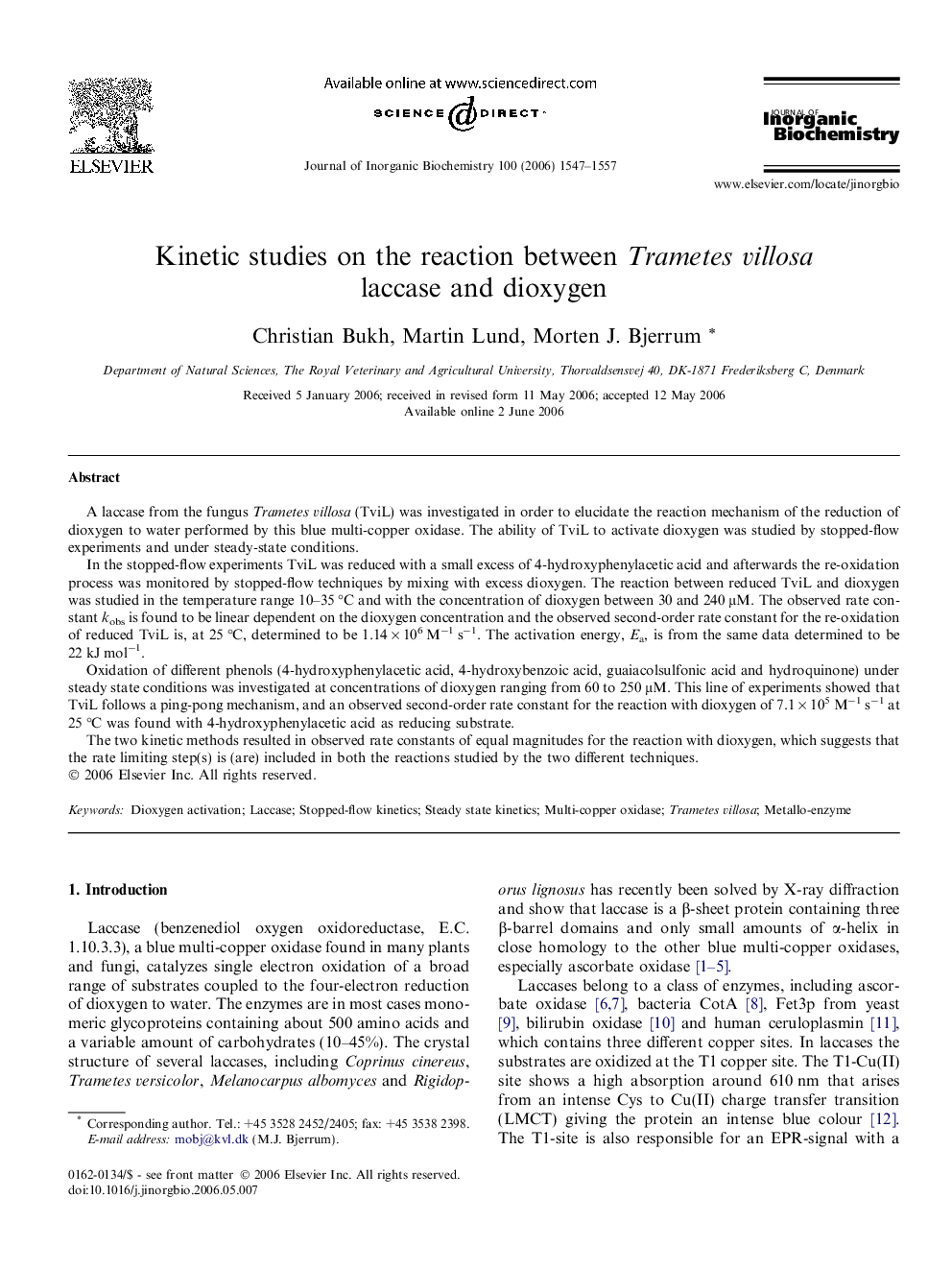| Article ID | Journal | Published Year | Pages | File Type |
|---|---|---|---|---|
| 1316804 | Journal of Inorganic Biochemistry | 2006 | 11 Pages |
A laccase from the fungus Trametes villosa (TviL) was investigated in order to elucidate the reaction mechanism of the reduction of dioxygen to water performed by this blue multi-copper oxidase. The ability of TviL to activate dioxygen was studied by stopped-flow experiments and under steady-state conditions.In the stopped-flow experiments TviL was reduced with a small excess of 4-hydroxyphenylacetic acid and afterwards the re-oxidation process was monitored by stopped-flow techniques by mixing with excess dioxygen. The reaction between reduced TviL and dioxygen was studied in the temperature range 10–35 °C and with the concentration of dioxygen between 30 and 240 μM. The observed rate constant kobs is found to be linear dependent on the dioxygen concentration and the observed second-order rate constant for the re-oxidation of reduced TviL is, at 25 °C, determined to be 1.14 × 106 M−1 s−1. The activation energy, Ea, is from the same data determined to be 22 kJ mol−1.Oxidation of different phenols (4-hydroxyphenylacetic acid, 4-hydroxybenzoic acid, guaiacolsulfonic acid and hydroquinone) under steady state conditions was investigated at concentrations of dioxygen ranging from 60 to 250 μM. This line of experiments showed that TviL follows a ping-pong mechanism, and an observed second-order rate constant for the reaction with dioxygen of 7.1 × 105 M−1 s−1 at 25 °C was found with 4-hydroxyphenylacetic acid as reducing substrate.The two kinetic methods resulted in observed rate constants of equal magnitudes for the reaction with dioxygen, which suggests that the rate limiting step(s) is (are) included in both the reactions studied by the two different techniques.
